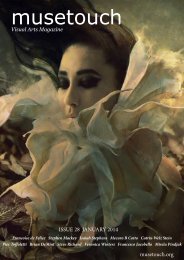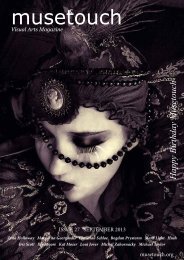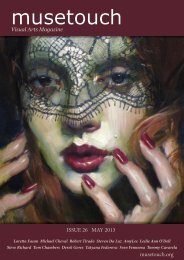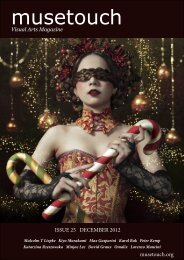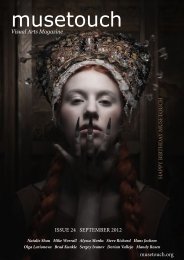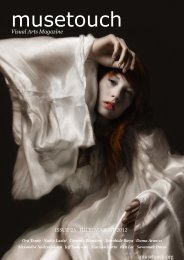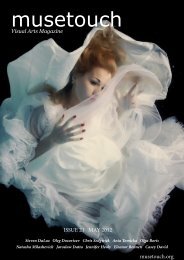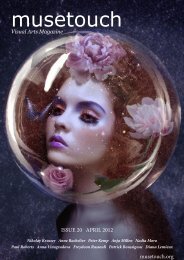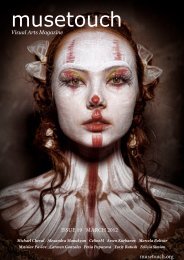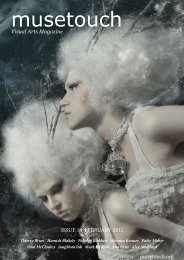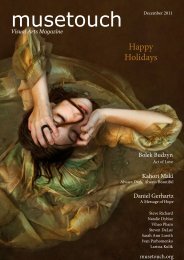musetouch_issue_17
Create successful ePaper yourself
Turn your PDF publications into a flip-book with our unique Google optimized e-Paper software.
Igor Samsonov<br />
Born in Voronezh, Russia in 1963, Igor Samsonov began drawing when he was six years old<br />
and revealed his talents in his first public exhibition at age ten. Blessed with talent in both<br />
painting and mathematics, Samsonov pursued a duel career in mathematics and art until he<br />
realized that his artistic muse was slowly dying. Applying to the exclusive Academy of Fine<br />
Arts in Saint Petersburg, Samsonov was accepted in 1990 and began his seven years of tutelage<br />
under the finest painters in Russia. During this time Samsonov’s complete immersion<br />
into the art world began to define and sharpen the artistic style that would become his own.<br />
Samsonov’s influence from the early Renaissance period known as the Quattrocentro period<br />
is evident in his work. At this time in art history late Gothic influences were blending with<br />
new 15th century Italian Renaissance sensibilities. Quattrocento artists and sculptors incorporated<br />
the more classic forms developed by Roman and Greek Sculptors. Quattrocentro<br />
artist Piero della Francesca whose style brought a serene humanism to his work is Samsonov’s<br />
favorite from this period. Other influences include15th century Dutch artist Bosch whose<br />
themes dwelled on human sin and moral failings, <strong>17</strong>th century Dutch artist Johannes Vermeer<br />
whose interior scenes of ordinary bourgeois life seem luminous with his use of translucent<br />
light and <strong>17</strong>th century Dutch artist Rembrandt whose treatment of mankind is full of<br />
human empathy and whose work represents the zenith of Dutch Renaissance painting.<br />
Blending modern artistic techniques and influences with Renaissance traditions has in the<br />
words of one museum curator “ created non-derivative works of unique originality and<br />
beauty.” Linda Zimmerman, curator of his recent exhibition in Scottsdale, Arizona says of<br />
Samsonov “he has such a respect for art history and of the Renaissance painters in particular<br />
but his work incorporates strong modern elements of surrealism and mysticism.”<br />
Samsonov’s rich imagination is the source for most of his subjects. Sometimes serious, sometimes<br />
fanciful and sometimes sublime his compositions are the result of great forethought and<br />
draw much or their power from the themes of conflict that he sees as inherent in the human<br />
and natural world. He explains, “There are always natural elements that oppose each other.<br />
Light and dark, young and old, the beautiful and the horrendous, all of my work plays on<br />
these themes.” Samsonov’s work is rich in symbolism. Many symbols are from the early history<br />
of China usually signifying philosophical ideas such as balance and generosity. Samsonov<br />
often incorporates Latin to title a painting and has created a unique alphabet to incorporate<br />
his most private thoughts about a painting into the work.<br />
<strong>musetouch</strong> 166<br />
academart.com/samsonov




